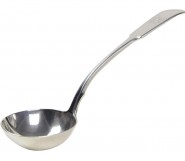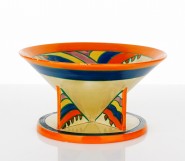Lot #5 - Emily Kame Kngwarreye
-
Auction House:Deutscher and Hackett
-
Sale Name:Important Australian Aboriginal Art
-
Sale Date:30 Mar 2022 ~ 7pm (AEDT)
-
Lot #:5
-
Lot Description:Emily Kame Kngwarreye
(c.1910 - 1996)
Merne (Everything), 1991
synthetic polymer paint on linen
121.5 x 212.0 cm
bears inscription verso: artist’s name and Delmore Gallery cat. 1W29
PROVENANCE: Commissioned by Delmore Gallery, via Alice Springs; Barry Stern Gallery, Sydney; Private collection, Sydney; Sotheby’s, Sydney, 16 August 1999, lot 75 (as ‘Merne (Food) Everything’); Private collection, Brisbane This painting is accompanied by a certificate of authenticity from Delmore Gallery that states: ‘“Alhalkere Country 1990” by Emily Kame Kngwarreye, draws attention to the figurative outline of an unidentified plant underlying the loose nature of dotted workings, both characteristics that we recognise in Kngwarreye’s early works. This is an exploratory work created in those early vigorous days of painting with acrylic paint - extending and giving life to her creative path as an active artist. “Alhalkere Country 1990” aligns with her batik background when working with the fluid hot wax and coloured dyes allowed the emergence of her individual and distinctive loose-handed abstract style. The colour and workings of the dots in this work show that Emily was working with two brushes, where the smaller one was obviously passed its used-by date with its wooden head impacting on the canvas leaving a hollowed-out centre. The murky red ochre dots on charcoal background, the watery creamy white dots, and the light green suggest that plants and their fruit and seed were dried and sparse – in a state of country courting drought. This canvas appeared in September, three months before summer rains could be expected, and at a time of being alert to sense and see indicators of likely rain. With rain, the ceremonies would gather people together in hope of “singing up” a good season – a time to “look after” their country. Significant early works by Emily Kame Kngwarreye have been acquired by the National Gallery of Victoria and collected by other notable institutions and major collectors across the world.’ -
Notes:A response to the everchanging landscape of her traditional homelands at Alhalker (Alalgura), north-east of Alice Springs, the paintings of Emily Kngwarreye record her acute observation, often in minute detail, of the shifting fluctuations in the state of the flora around her, alerting her to the readiness of bush food or medicinal plants. Judith Ryan notes that, ‘clearly Emily Kngwarreye was a mark-maker extraordinaire…. she ventured further with masses of dots and marks, making intimate and grand gestures layering and intensifying the dots to the exclusion of graphic elements’1 and here in 'Merne (Everything)' 1991, layers of olive, yellow, dusky pink, purple and grey dots – in many places applied by the artist using her fingers – produce fields-of-dots that faithfully evoke the colours of her country after early-summer rains when the first new growth appears through the parched earth after months of dryness. The black ground may be seen as the spread of the roots of Emily Kame Kngwarreye’s totemic yam plant underground, together with the spread of ancestral forces through the earth. Kngwarreye’s paintings were constructed of various elements that over time were either augmented or eliminated from the surface of the canvas. Underlying grids structure the compositions, sequences of dots aligned between or over dots, dashes and linear marks, meandering lines and areas of dots applied on dots that allow a build-up of colour. These elements constitute the artist's lexicon and are used separately or in varying combinations thus allowing her work to evolve and be constantly fresh. Her early works were predominantly characterised by dots, an integral stylistic element in Kngwarreye’s painting and whilst dots have become an identifiable hallmark of contemporary Indigenous painting, ‘few desert artists, either men or women have used the dot mark as innovatively as Emily.’2 The range of her dots vary from fine to coarse, light to heavy sometimes singular and individual, other times multiple dots are overlaid and combined to form lines or representations of seed pods or any of the myriad of plants that bloom at this time of year. During the 1990s, Emily Kngwarreye emerged as one of Australia's leading painters and her works were sought after on an unprecedented scale. Kngwarreye became nationally and internationally recognised for the many stylistic shifts she effortlessly adopted which allowed her painting to evolve intuitively in the way she responded to her specific cultural experience. These striking interpretations of country, not only challenged, but irrevocably changed, preconceived notions of Indigenous art. 1. Ryan, J. cited in Isaacs, J. et al., 'Emily Kngwarreye Paintings', Craftsman House, Sydney, 1998, p. 77; 2. Christopher Hodges quoted in Neale, M. et al., 'Utopia: The genius of Emily Kame Kngwarreye,' The National Museum of Art, Osaka, 2008 p. 113 CRISPIN GUTTERIDGE
-
Estimate:A$180,000 - 240,000
-
Realised Price:
-
Category:Art
This Sale has been held and this item is no longer available. Details are provided for information purposes only.










